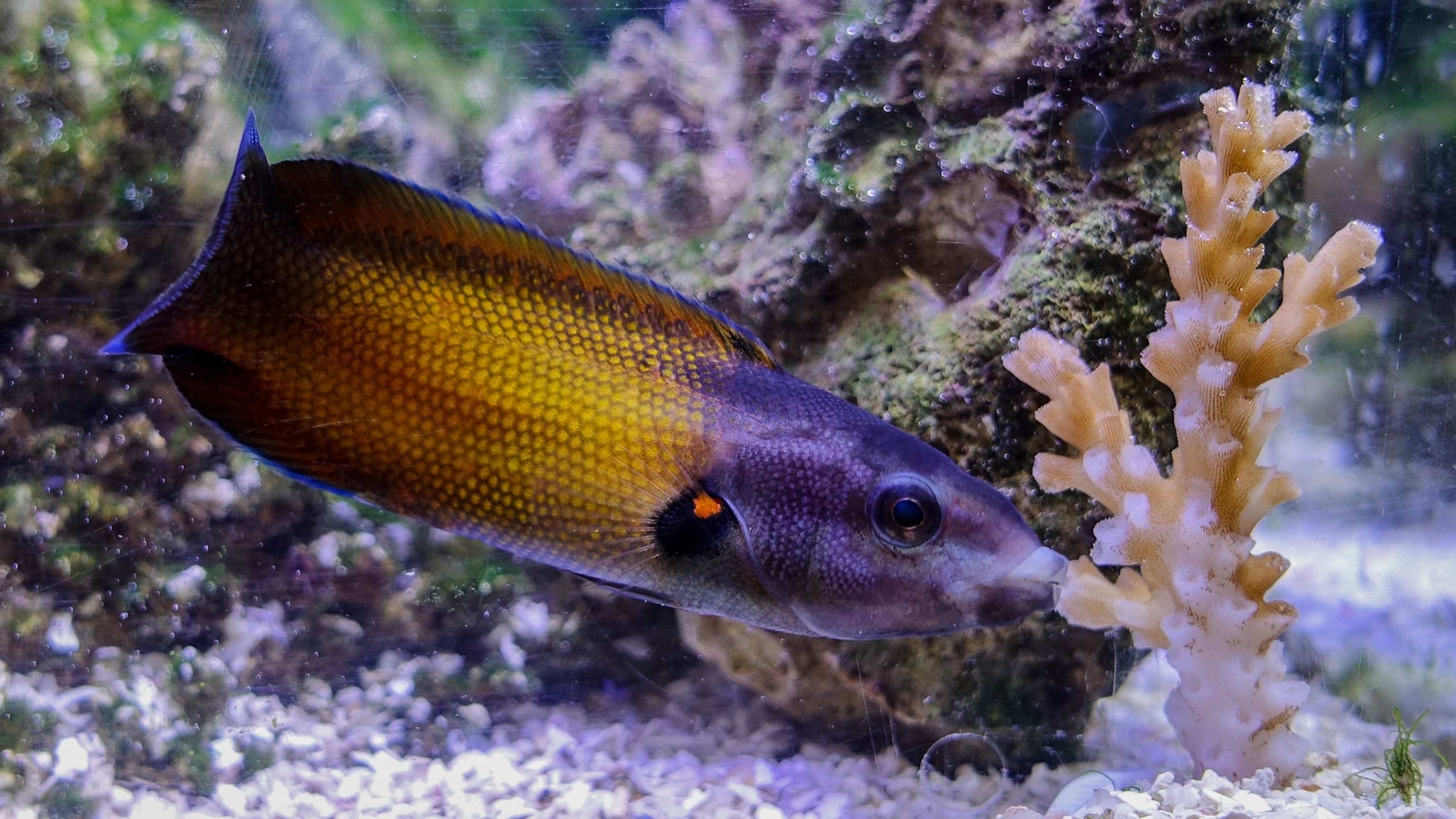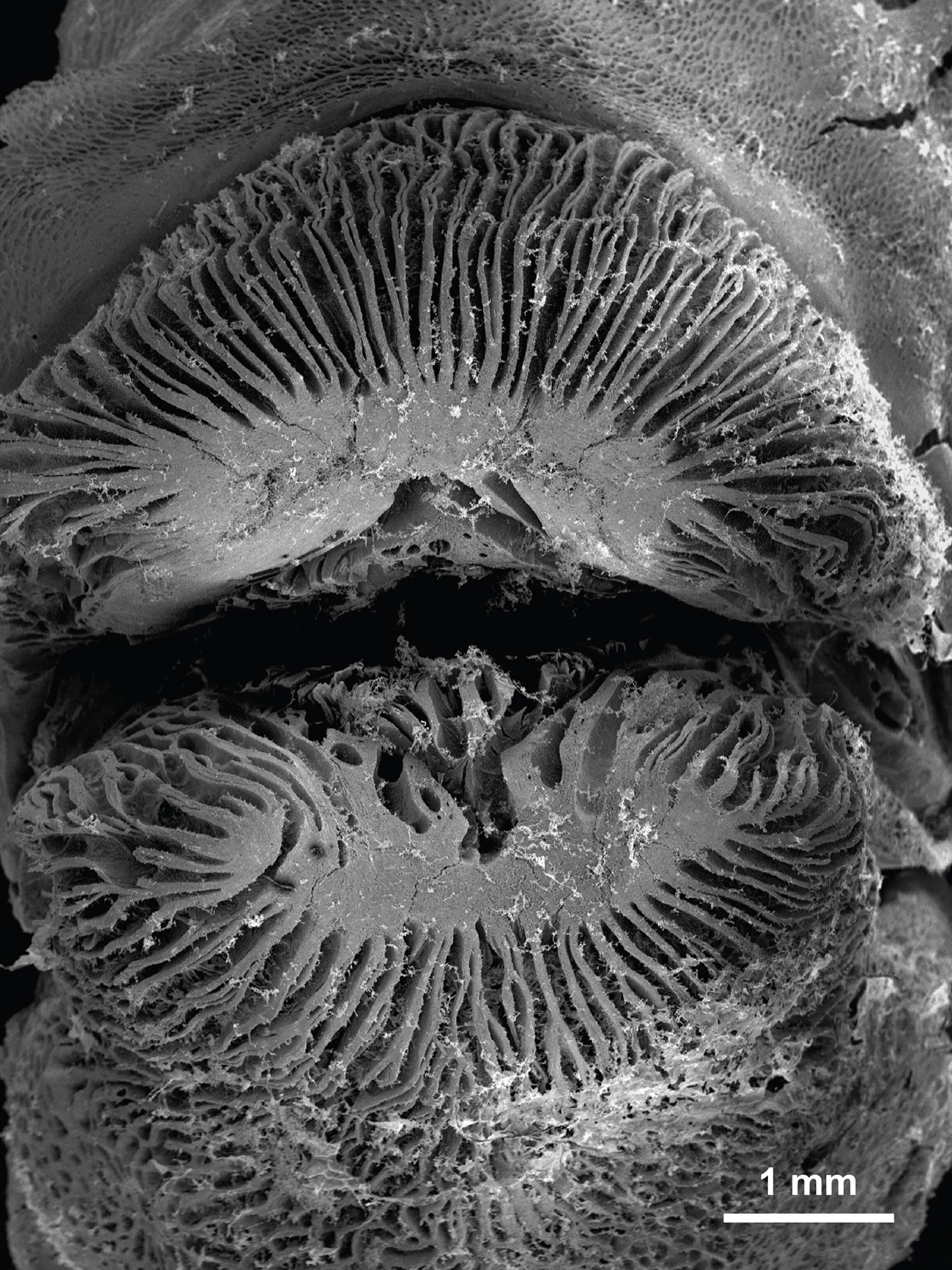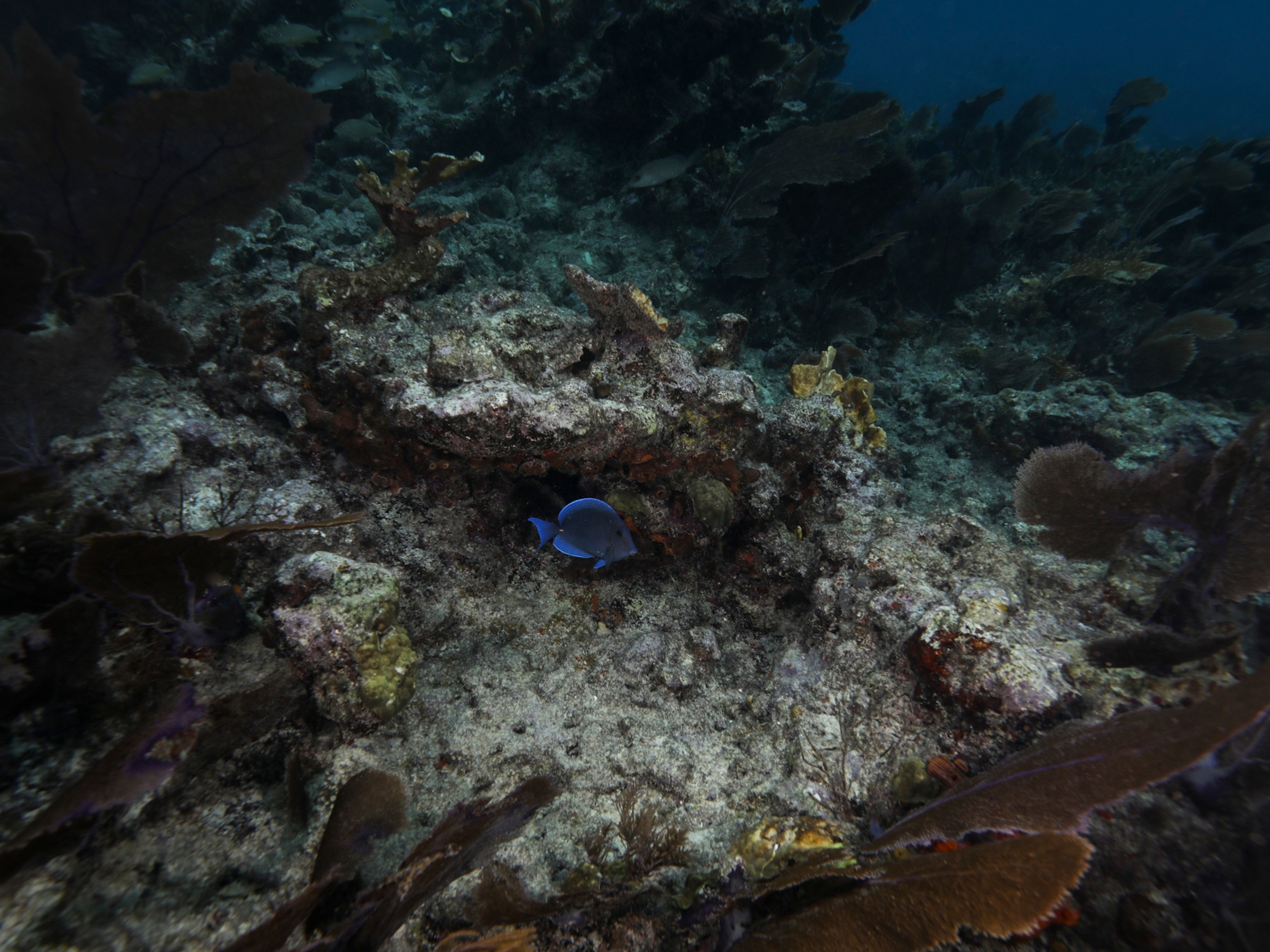Why Slimy Fish Lips Are the Secret to Eating Stinging Coral
The tubelip wrasse has evolved a strategy for preying on an animal most reef creatures avoid.
Fish lips may be fixture of the selfie generation, but for one tropical fish, a fleshy pout helps them survive.
The tubelip wrasse (Labropsis australis) relies on self-lubricated lips to eat stinging corals in the Indian Ocean and western Pacific, a new study says.
Corals may look soft and innocuous, but the animals are actually a challenging meal: Their razor-sharp skeletons are protected by mucus-covered flesh laden with stinging cells. For that reason, many fish avoid eating them. (See "Fish Smell Like the Coral They Eat—Disguise Is New to Science.")
Not the tubelip wrasse, which has "distinct fleshy lips that stick out, and they are shaped like a tube when the mouth is closed,” study co-author David Bellwood, of Australia's James Cook University, says by email.
“A closer look shows that the lips are like the gills of a mushroom but covered in slime.”

Fish Faces
Bellwood and his colleague, Víctor Huertas, used an electron scanning microscope to examine the mouths and lips of tubelip wrasse and a non-coral-eating wrasse species in incredible detail.
While the species' teeth and jaw bones were similar, their lips were wildly different: Tubelip wrasse lips have numerous thin membranes arranged outward from the center, while the other species has narrow, smooth lips without membranes.
Next, Bellwood and Huertas produced extremely thin cross-sections of tubelip wrasse lips to peek into their internal structure. The lips were loaded with mucus-secreting cells, according to the study, published June 5 in the journal Current Biology.
Finally, the researchers analyzed high-speed video images of tubelip wrasses feeding on corals in the lab at James Cook. The fish feed by briefly placing their lips against the coral before delivering a powerful suck, or "kiss"—often accompanied by an audible tuk sound.
Rather than grabbing onto the coral, the fish appear to create a seal with their mouths over a small area, presumably to more efficiently suction off coral mucus and flesh. (See stunning pictures of coral reefs.)

Lip Service
Bellwood and Huertas suggest that the tubelip wrasse’s slimy lips may provide a protective coat between the fish and the coral’s stinging cells while also facilitating suction feeding.
While plausible, these ideas will be difficult to test, so for now it is a “wonderful mystery,” said Peter Wainwright, a fish biologist at the University of California, Davis, who was not involved in the research.
“This paper significantly extends our knowledge of how fish eat coral—one of the rarest feeding habits found among reef fish," Wainwright says in an email. (See "Fish Pee, Coral's Number One Nutrient Supply, Cut by Fishing.")
The next step, the authors say, is to delve more into the "magic of the mucus," and find how exactly the substance aids tubelips in eating coral.
Studying coral predators like the tubelip may help conservationists in evaluating threats toward coral reefs, says Bellwood. Coral reefs are declining worldwide due mainly to ocean warming and acidification.
"Hopefully," he says, "these tubelip wrasses are more like irritating mosquitoes than vampire bats slowly draining the coral’s bodily fluids.”
Follow Mary Bates on Twitter.





